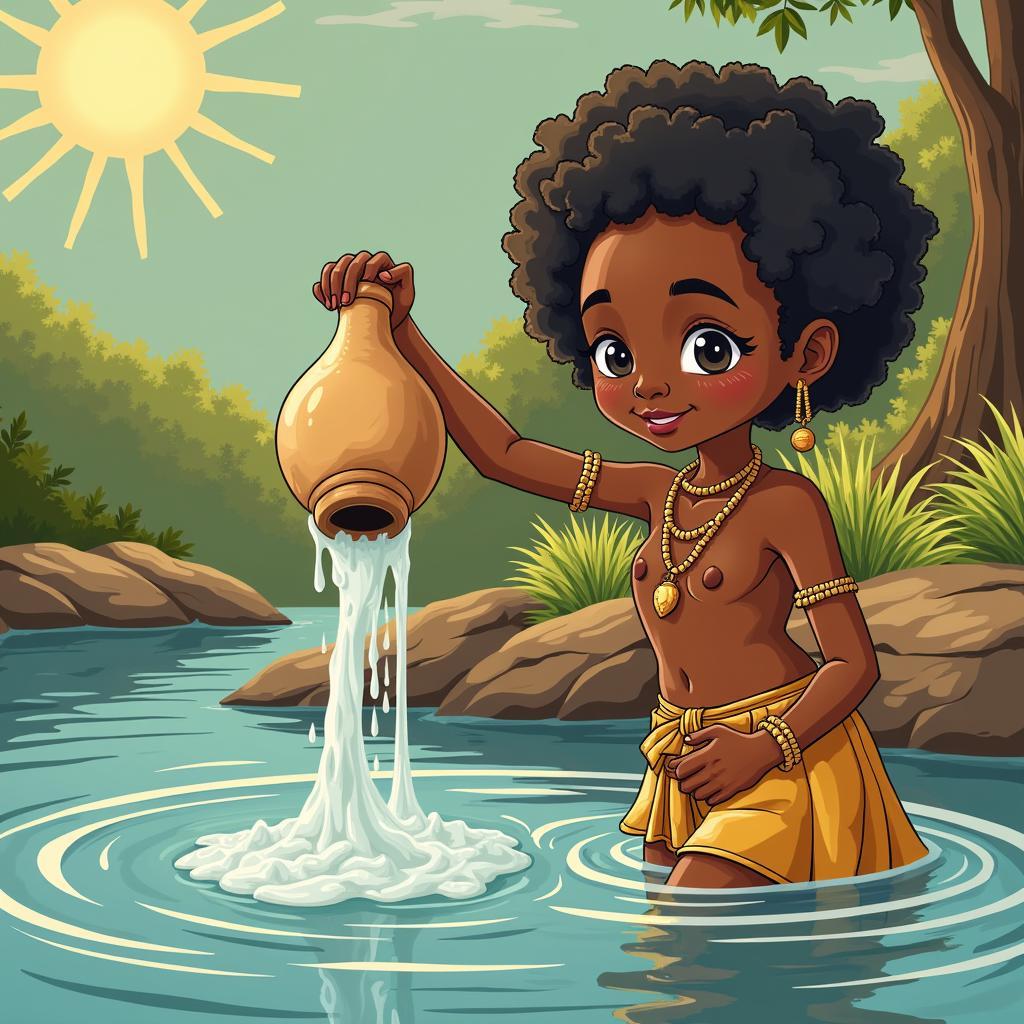The Majestic African Deer: Unveiling the Common Eland
The common eland, often mistakenly referred to as an African deer, stands as the largest antelope species on the African continent. These magnificent creatures, scientifically known as Taurotragus oryx, captivate with their unique spiral horns, gentle nature, and surprising agility. Let’s delve into the fascinating world of the common eland, exploring its habitat, behavior, and cultural significance.
Understanding the African Deer-Like Species: The Common Eland
While the common eland shares some visual similarities with deer, particularly in its size and stature, it is, in fact, a member of the Bovidae family, placing it firmly within the antelope group. This distinction is crucial for understanding its evolutionary history and ecological role within african deer like species. The common eland’s imposing size, coupled with its distinctive spiral horns, sets it apart from other antelope species.
 Common Eland Grazing in the Savannah
Common Eland Grazing in the Savannah
Habitat and Distribution of the Common Eland
Common elands thrive in a variety of habitats across sub-Saharan Africa, including savannas, woodlands, and grasslands. They display remarkable adaptability, capable of surviving in both arid and semi-arid regions. Their ability to derive significant moisture from the vegetation they consume allows them to withstand prolonged periods without drinking water.
Where can you find the Common Eland?
Common elands can be found in various countries across sub-Saharan Africa. Their range extends from Senegal in the west to Ethiopia in the east, and down south to South Africa. They are absent from the dense rainforests of Central Africa.
Physical Characteristics: More than just an African Deer with Spiral Horns
Beyond their impressive size and tightly twisted, spiraled horns, common elands possess several distinguishing features. Their coats are typically a tawny brown, often with vertical white stripes on their torso. Both males and females sport horns, though the male’s horns tend to be thicker and more heavily spiraled.
Behavior and Social Structure: The Gentle Giants of the African Antelope Species List
Despite their imposing size, common elands are generally docile creatures. They are social animals, forming herds that can range from a few individuals to several hundred. These herds often consist of females and their young, while adult males may be solitary or form smaller bachelor groups. Within the african antelope species list, the common eland stands out for its gentle nature.
How do Common Elands communicate?
Common elands communicate through a variety of vocalizations, including low grunts and barks. They also use body language, such as posture and ear movements, to convey information.
Cultural Significance and Conservation Status: Protecting the African Deer Crossword Clue
The common eland holds cultural significance for many African communities. They are valued as a source of meat and hides, and their horns are sometimes used in traditional ceremonies. As an african deer crossword clue, the common eland challenges our understanding and emphasizes the need for accurate terminology. While not currently considered endangered, their populations are facing increasing pressure from habitat loss and hunting.
Conclusion: The Enduring Legacy of the Common Eland
The common eland, far more than just an “African deer,” embodies the strength, resilience, and grace of African wildlife. Understanding and appreciating these magnificent creatures is crucial for their continued survival. Let us continue to learn and advocate for the conservation of this iconic antelope.
FAQ
- What is the largest antelope in Africa? The common eland.
- Are common elands deer? No, they are antelope.
- What are the distinctive features of common elands? Large size, spiral horns, and tawny brown coat.
- Where do common elands live? Sub-Saharan Africa, in savannas, woodlands, and grasslands.
- What is the social structure of common elands? They live in herds, with females and young forming the core groups.
- Are common elands endangered? Not currently, but their populations are facing increasing pressure.
- What is the cultural significance of common elands? They are valued for their meat, hides, and horns are used in some traditional ceremonies.
Further Reading: african antelope eland and african deer with spiral horns.
Need help? Contact us at +255768904061, kaka.mag@gmail.com or visit us at Mbarali DC Mawindi, Kangaga, Tanzania. Our customer service team is available 24/7.


